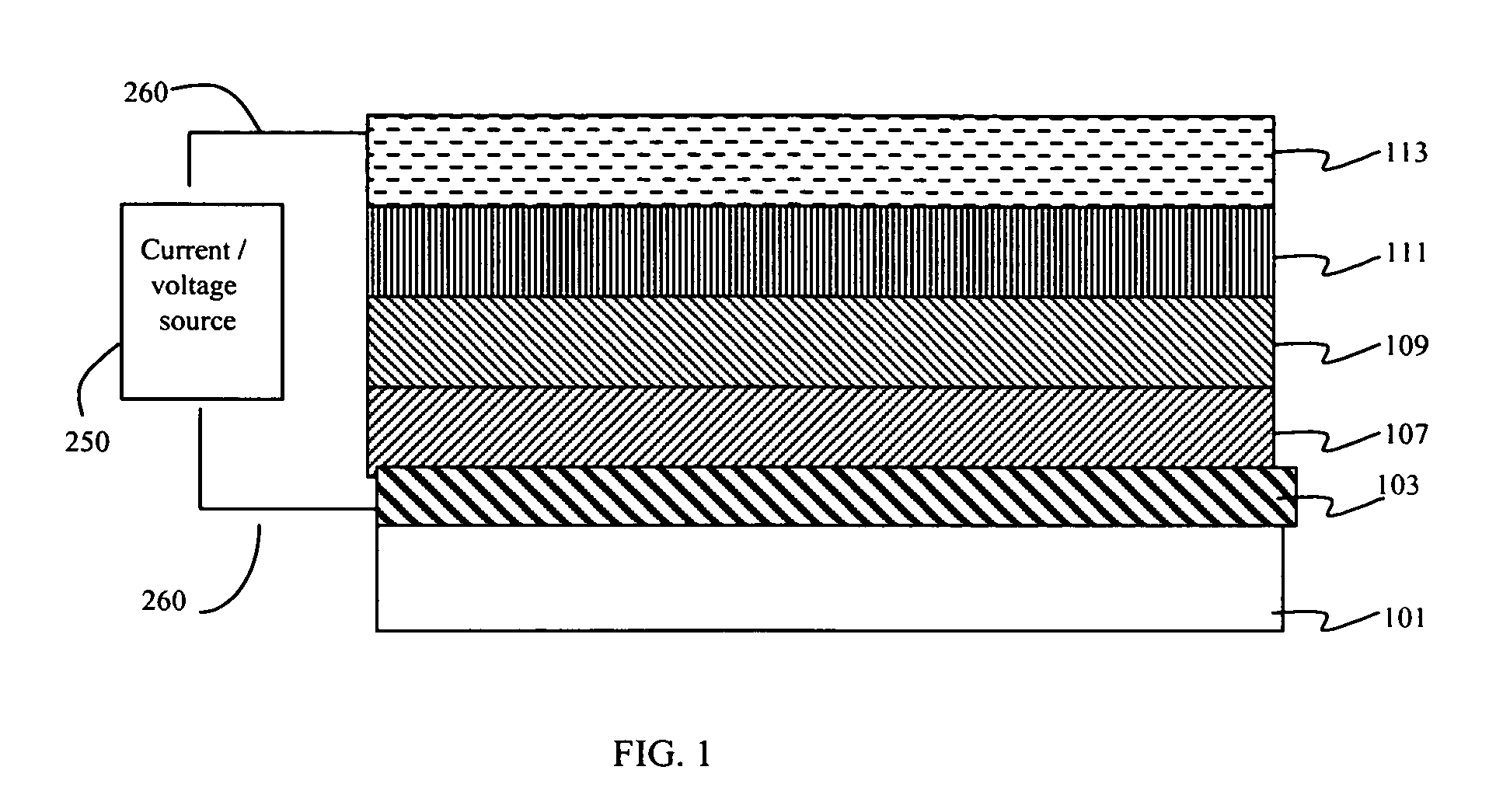Process for making an organic light-emitting device
a technology of organic light-emitting devices and electroluminescent devices, which is applied in the direction of discharge tubes/lamp details, luminescent screens of discharge tubes, natural mineral layered products, etc., can solve the problems of organic materials used in the manufacture of oled devices that are often subject to degradation, changes in the structure of molecules, and associated changes in material properties, so as to improve the control and spatial homogeneity of deposition, improve the performance of oled devices, and improve the spatial homo
- Summary
- Abstract
- Description
- Claims
- Application Information
AI Technical Summary
Benefits of technology
Problems solved by technology
Method used
Image
Examples
example 1 (
Control)
[0121] An OLED device with the structure depicted in FIG. 1 was prepared with the organic EL element layers between the electrodes vacuum deposited by standard techniques. The glass (1143 microns) substrate 101 and Indium Tin Oxide (ITO 100 nm) anode 103 had a replicated pattern geometry divided into four similar quadrants. Subsequently deposited onto this anode structure were: a nominally 50 nm NPB hole-transporting layer 107, a 50 nm light-emitting layer 109 containing TBADN (Tert-Butyl-anthracene di-naphthylene) co-doped with 1 weight % TBP (2,5,8,11 tetra-t-butylperylene) w.r.t. TBADN and 2 weight % NPB (N,N′-di(naphthalene-1-yl)-N,N′-diphenyl-benzidine, a hole-transport material) w.r.t. TBADN, a 37.5 nm ALQ electron- transporting layer 111 and finally a 220 nm thick Mg:Ag cathode 113, and the structure packaged as a functional electroluminescent device.
example 2 (
Invention)
[0122] An OLED device was fabricated similarly as in Example 1, with the exception that the organic material light-emitting layer 109 comprising TBADN and co-dopants TBP and NPB was deposited by a method in accordance with the present invention under atmospheric conditions. More particularly, a SAS type particle generation process of the type disclosed in copending, commonly assigned U.S. Ser. No. 10 / 814,354 (Docket 86430) was employed to generate a desired gaseous flow stream. A nominally 1800 ml stainless steel particle formation vessel was fitted with a 4 cm diameter agitator of the type disclosed in U.S. Pat. No. 6,422,736, comprising a draft tube and bottom and top impellers. CO2 was added to the particle formation vessel while adjusting temperature to 90 C. and pressure to 300 Bar and while stirring at 2775 revolutions per minute. The addition of CO2 at 100 g / min through a feed port that had a 200 μm orifice at its tip, and a 0.1 wt % solution of TBADN co-doped with ...
PUM
| Property | Measurement | Unit |
|---|---|---|
| Thickness | aaaaa | aaaaa |
| Area | aaaaa | aaaaa |
| Nanoscale particle size | aaaaa | aaaaa |
Abstract
Description
Claims
Application Information
 Login to View More
Login to View More - R&D
- Intellectual Property
- Life Sciences
- Materials
- Tech Scout
- Unparalleled Data Quality
- Higher Quality Content
- 60% Fewer Hallucinations
Browse by: Latest US Patents, China's latest patents, Technical Efficacy Thesaurus, Application Domain, Technology Topic, Popular Technical Reports.
© 2025 PatSnap. All rights reserved.Legal|Privacy policy|Modern Slavery Act Transparency Statement|Sitemap|About US| Contact US: help@patsnap.com

